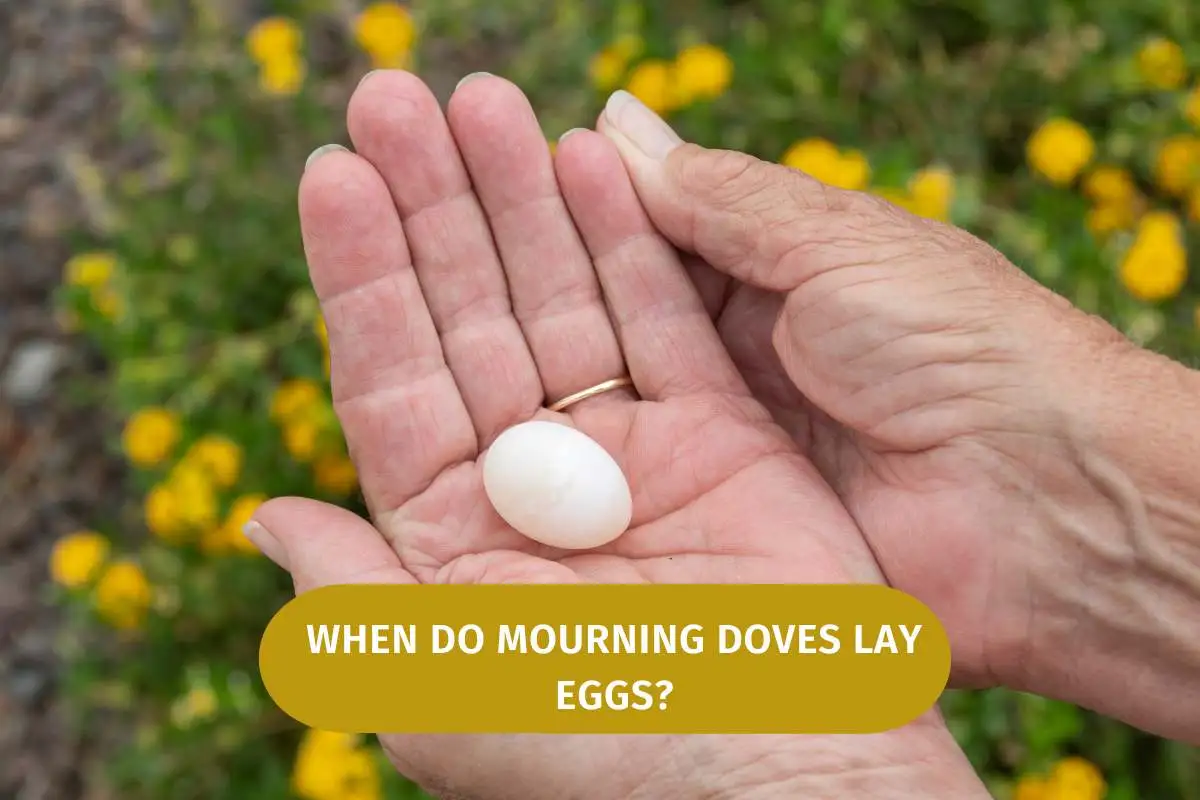One of the most notable aspects of mourning dove breeding is the timing of egg laying. These birds generally begin to lay eggs in late April or early May and continue to do so throughout the summer months.
However, the exact timing can vary depending on various factors, including the dove’s location and food availability.
Food availability is the primary factor influencing egg-laying timing in mourning doves. These birds feed mainly on seeds and need a steady supply of food to produce eggs.
As a result, doves are more likely to lay eggs when plenty of food is available. It is particularly true in the spring and early summer when seeds and other food sources are abundant.
Does weather condition delay egg lay in the morning dove?
Weather can also play a role in the timing of egg-laying in mourning doves. These birds are sensitive to changes in temperature and moisture, and they may delay laying eggs if the weather is too cold or wet. For example, if a sudden cold front moves in, doves may wait until the weather warms up before beginning to lay eggs.
Overall, the timing of egg laying in mourning doves is influenced by various factors, including food availability and weather conditions.
When Do Mourning Doves Stop Laying Eggs
Mourning doves typically lay eggs from late March through October in most parts of the United States. However, the exact timing can vary depending on the region and individual dove.
Doves generally stop laying eggs when the weather becomes too cold or when food is scarce. They may also stop laying eggs if they have already raised a successful brood and do not have the resources to raise another one.
How long do mourning doves sit on their eggs?
Mourning doves typically sit on their eggs for two to a half weeks before hatching.
After the eggs are laid, the female dove will incubate them continuously until they hatch. She will only leave the nest briefly to eat, drink, and stretch her wings.
The male dove may also help incubate the eggs by taking over for the female for short periods. Once the eggs hatch, both parents will work together to feed and care for the young doves until they are ready to leave the nest. This process usually takes another two to three weeks.
How many times do mourning doves lay eggs a year?
Mourning doves are capable of laying multiple clutches of eggs throughout the year.
On average, a mourning dove will lay two to four eggs per clutch, totaling two to four clutches per year. A single dove can lay anywhere from four to 8 to 12 eggs a year.
However, the exact number of eggs a dove will lay can vary depending on various factors ( I have already discussed it in the heading section of this article)
Mourning doves are opportunistic breeders, which means that they will take advantage of any conditions that are favorable for raising young. If there is plenty of food available and the weather is mild, a dove may choose to lay more eggs and raise multiple broods in a year. In contrast, if the weather is harsh or food is scarce, a dove may only lay a single clutch of eggs or even skip breeding altogether in that year.
Where do mourning doves lay their eggs?
Mourning doves typically lay their eggs in a nest they build, using materials such as twigs, grasses, and feathers. The nest is usually made in a tree or flat surfaces, such as a building or platform.
Doves will often reuse the same nest or build a new one nearby if they have successfully raised young.
When building a nest, doves will typically seek a location that provides protection and food access. For example, they may choose a spot near a water source or in an area with plenty of seed-bearing plants.
The nest is usually built in a tree or shrub to protect the eggs and young from predators.
Once the nest is built, the female dove will lay her eggs and incubate them until they hatch. She will only leave the nest briefly to eat, drink, and stretch her wings.
The male dove may also help incubate the eggs by taking over for the female for short periods. Once the eggs hatch, both parents will work together to feed and care for the young doves until they are ready to leave the nest.
Mourning doves eggs color
Mourning doves lay white or pale blue eggs that are about 1 inch (2.5 cm) in length. The eggs have a slightly glossy appearance and are often speckled with brown or gray markings. The color of the eggs may vary slightly depending on the individual bird and the conditions in which they are laid.
Summary about when do mourning doves lay eggs
Mourning doves typically lay eggs from late April through early May in most parts of the United States. The exact timing can vary depending on the region and individual dove.
Doves will stop laying eggs when the weather becomes too cold or when food is scarce, and they may also stop laying eggs if they have already raised a successful brood and do not have the resources to raise another one.
These birds can lay multiple clutches of eggs throughout the year, with each clutch consisting of two to six eggs.
Despite challenges such as predation and poor weather conditions, mourning doves can successfully raise multiple young broods each year, thanks to their adaptability and reproductive abilities.

